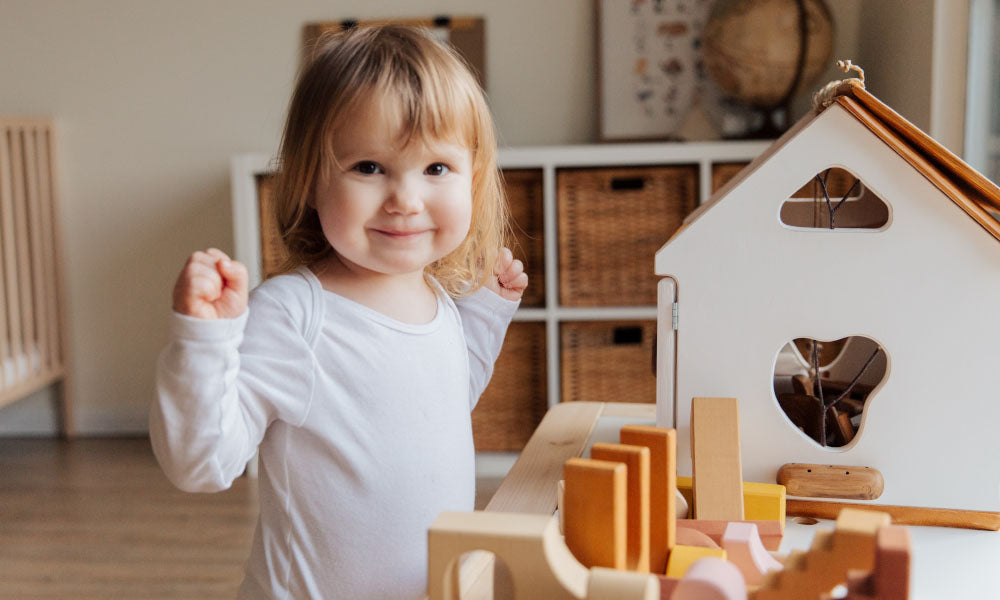It’s a shining new year. Another enjoyable holiday season is behind us, adding to our memories. Our timelines are flooded with the exotic locations our friends visited, the funny things their kids said and did, the mishaps we experienced, the resolutions for the year ahead and, of course, the "year-in-review" videos of everybody around us.
We revel in the likes, reactions, and recommendations, but forget that there's so much more to what we share online than just reactions from friends. Our digital activity is slowly but surely building our digital identities, a very strong social factor in the age of the internet. As a parent in the millennial age, our understanding of our digital identities is crucial.
A study conducted by Pew Research Center in 2012 found that parents spend more time online than non-parents. This is especially true for parents of children who are also on social media, and parents get on social media in an attempt to monitor their children’s digital lives. Another possible reason is that parents experience significantly more social isolation than non-parents, and social media provides an opportunity to fill that void.
Children themselves can run into problems from over-identifying with their online personas. Kids today have a constantly experiencing little spikes of dopamine from the reactions of their friends on the internet, and this increases the chance they'll become addicted to social media. The low minimum age requirement of 13 for setting up a social media profile makes this all the more likely.
Most alcoholics and smokers were introduced to these substances during their teenage years when their brains are much more vulnerable to addition, it's not unlikely this would also be true for social media addiction. Teenagers project a filtered version of their lives to their friends, while also seeing a filtered version of their friends’ lives, denying them the joy of a real friendship. Even though they indulge in a lot of fun activities with their friends, many of them do not experience the security the comes from the strength of truly deep and meaningful bonds.
In an interview I conducted for our Momspirations series with Cat Coode, a digital identity expert and founder of BinaryTattoo, we spoke about what parents can do to navigate the complex world of digital imprints and identities. The name BinaryTattoo signifies the permanent nature of our digital imprints, and Cat’s mission is to educate people about how the digital world really works.
Cat's recommendations include:
Remember that profile photos are always public.
No matter how many privacy settings exist, profile photos are always public. This means that people all over the world have access to them. Also, by putting up pictures of children as profile photos, we are allowing public photo crawlers to easily identify your child alongside your name. Coupled with facial recognition technology, which a majority of networks have begun using, it's doubly easy to identify and track the target.
Children typically have a digital identity by the sixth month of their lives, although some may have one before they're even born including ultrasound images and other details. By the time they're old enough to sign up for their own accounts, they typically have about 2000 photos defining them online.
The permanent nature of these photos leave a lasting impact on the lives of these kids, with their potential employers seeking them out, or even leaving them open to heckling by peers at a later stage. Many children are left vulnerable to feelings of embarrassment during the difficult adolescent years and also later in life.
Countries like France are already taking drastic steps to stop this trend of parents putting up pictures of their children, with parents facing prison for sharing their children's photos indiscriminately.
Create a family digital contract.
We often sign contracts before undertaking major commitments. It's helpful to treat the child’s digital world with the same level of respect, rigor, and commitment. A digital contract is an agreement between the parent and child around the use of devices and online networks.
The child’s part of the contract could include things like:
- Agreement on not using the device to abuse, bully or threaten others.
- Agreement that anything uncomfortable should be immediately brought to the notice of the parents.
- The number of hours of use, purpose of use, places they can and can’t use the device, etc.
- The knowledge that everything that goes online will remain there permanently.
- What amount of control the parent will exercise on the child’s online activity
- Agreement about how they will learn to navigate the digital world together.
Get them to show you how they use the app.
Parents might be under the impression that they're aware of the uses of a given application. Yet, the way kids use it might be entirely different from the way a parent uses it. As in the case of a recent outrage, a mom discovered her 12-year-old girl using an app in a particularly dangerous manner – live-streaming from her bedroom.
Cat is of the opinion that the relationship between kids and social media/technology can be likened to underage drinking. Every parent can warn their kids about the dangers of underage drinking, yet they'll try it anyway. The better approach is to equip the kids and yourself with the right information.
“When parents have access to children’s passwords, the child will go ahead and create additional secret accounts that their parents have no clue about."
Steer clear of providing false information.
Children know a great deal about technology. Toddlers are given phones to keep them engaged, and the consequence is that children are far savvier with technology than adults. When my daughter has a science project coming up, I see messages flying on WhatsApp groups (still on my phone, thankfully). Kids can’t wait to get on apps that help them connect, but they might require their own email.
When your kid is not yet 13, and you're considering opening an email account for them, one of the easiest options is to lie about their age.
It might seem innocuous enough, but parents should be aware that most programs will fire a switch when the child is officially eighteen. At that time, the child will be exposed to direct targeting, advertising, and features meant for adults – even though your child is not actually the right age.
Cat explains, “If any trouble were to arise from the interactions from this additional content, it could get blamed on the parent since they legally agreed on their child’s age.”
Equip yourself to deal with cyberbullying
Cyberbullying has emerged as a top parenting concern, even displacing teenage pregnancies and substance abuse.
Cyberbullying can include repeated targeted messaging to a select person in the group, stealing passwords, misusing information, disseminating false information, spreading inappropriately morphed images, direct threats, etc.
Reports suggest that most children don't report issues with bullying to their parents, the primary fear being that they'll be banned from using the network. This might be most instinctive and easiest thing to do when parents find out about cyberbullying, yet experts warn against this approach. The threat of being pulled away from the network will increase the peer pressure. Instead, it helps to calmly assess the extent of the bullying.
It’s important to equip ourselves with knowledge on how to report abuse on the internet. Social media networks support ways to reach out and report offensive comments and content. (Here is a comprehensive list on how to report internet trolls and cyberbullies.)
“Always take screenshots of the offensive posts before you disconnect from the user in case you need evidence of the trolling or bullying,” advises Cat.
Create a positive image.
Help your child to maintain a positive image online. Practice the pause before sharing anything online and guide them to do the same. Social media platforms are designed to make it easy to share thoughts instantly, but it’s helpful to remember that what you put out there is permanent and will serve as a reflection of who you are.
Maintain positive, respectful, unambiguous language while sharing your thoughts online. Refrain from making derogatory comments about someone’s appearance, religion, ethnicity, etc.
Cat also suggests working to maintain neutral language. For example, the comment, “Did you see Cat’s shirt?” could be interpreted as either positive (complimentary) or negative (mocking). Better to put, “I liked Cat’s shirt” or, “Did you see Cat’s shirt? I like it."
The expression "if you don’t have anything nice to say, don’t say anything at all” is very appropriate for social media.
Even in cases where we might think that the message is meant only for a certain recipient (as in private chat apps), it’s important to follow this rule. The app’s servers store these messages and the receiver also could store it through a screenshot.
Cat also recommends creating and maintaining a LinkedIn account for anyone over the age of 16. The professional nature of the network does not require any personal information and allows you to have a positive digital identity.
Raising the current generation is very different from the way we were raised. Our kids are infinitely smarter and savvier, but also lonelier. Their concept of fun is different, as is their understanding of friends. All adolescents go through the phase of identity crisis, but the pressure of looking good in front of peers all the time can have a lasting impact, and even lead to dire consequences.
As parents, it's time we stepped up and took the time to understand the digital phenomenon in a deep, engaged, and responsible manner. After all, the internet is what we make it.



